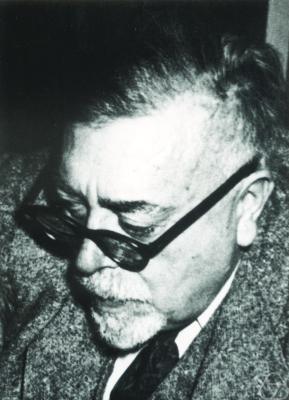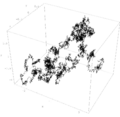Norbert Wiener facts for kids
Quick facts for kids
Norbert Wiener
|
|
|---|---|

Wiener in undated photograph
|
|
| Born | November 26, 1894 Columbia, Missouri, U.S.
|
| Died | March 18, 1964 (aged 69) Stockholm, Sweden
|
| Nationality | American |
| Education | Tufts College, BA 1909 Cornell University, MA, 1911 Harvard University, PhD 1913 |
| Known for |
Cybernetics
Brownian motion abstract Wiener space Wiener amalgam space classical Wiener space Evolutionary informatics Generalized Wiener process Information revolution Philosophy of information More: List of things named after Norbert Wiener |
| Spouse(s) |
Margaret Engemann
(m. 1926) |
| Children | 2 |
| Awards | Bôcher Memorial Prize (1933) National Medal of Science (1963) |
| Scientific career | |
| Fields | Mathematics Cybernetics |
| Institutions | Massachusetts Institute of Technology |
| Thesis | A Comparison Between the Treatment of the Algebra of Relatives by Schroeder and that by Whitehead and Russell (1913) |
| Doctoral advisors |
|
| Other academic advisors | Josiah Royce |
| Doctoral students |
|
| Signature | |
Norbert Wiener (November 26, 1894 – March 18, 1964) was an American mathematician and philosopher. He taught mathematics at the Massachusetts Institute of Technology (MIT). Wiener was a child prodigy, meaning he was very smart from a young age.
He is known as the founder of cybernetics. This is a science that studies how living things and machines communicate and control themselves. His ideas are important for engineering, computer science, biology, and even how society works.
Wiener was also one of the first to suggest that intelligent behavior comes from "feedback" systems. He thought machines could copy these systems. This was a big step towards developing modern artificial intelligence (AI).
Contents
Biography
Early Life and Education
Norbert Wiener was born in Columbia, Missouri. His parents, Leo Wiener and Bertha Kahn, were immigrants from Lithuania and Germany. His father, Leo, taught Norbert at home for most of his early years. Leo had a huge library, which Norbert used to learn a lot.
Norbert was incredibly smart. He finished Ayer High School in 1906 when he was only 11 years old. He then went to Tufts College and earned a bachelor's degree in mathematics at 14. After that, he studied philosophy at Cornell and graduated at 17.
Harvard and World War I Contributions
Wiener returned to Harvard for his advanced studies. He earned his PhD in June 1913, at just 19 years old. His PhD was in mathematical logic. This made him one of the youngest people to get such a degree.
In 1914, Wiener traveled to Europe. He studied with famous mathematicians like Bertrand Russell and David Hilbert. When America entered World War I, Wiener wanted to help. He tried to join the military but was rejected because of his poor eyesight.
Later, he worked on ballistics (the science of how projectiles move) at the Aberdeen Proving Ground. This work helped him become even more interested in mathematics. He eventually joined the army as a soldier and was stationed at Aberdeen just before the war ended.
Life After the War
After World War I, Wiener became a mathematics instructor at the MIT. He stayed there for the rest of his career and became a professor. He was a very well-known figure at MIT.
In 1926, Wiener went back to Europe as a Guggenheim scholar. He spent time at Göttingen and Cambridge universities. There, he worked on important math topics like Brownian motion and Fourier integrals.
Norbert Wiener married Margaret Engemann in 1926. They had two daughters. Many stories were told about Wiener's forgetfulness, but his daughter said he always remembered his children!
Before World War II, Wiener helped scholars who had lost their jobs in Germany. He also supported the China Aid Society.
World War II and Cybernetics
During World War II, Wiener worked on systems to help anti-aircraft guns aim and fire automatically. This led him to develop the Wiener filter. This filter helps reduce "noise" (unwanted signals) in information. It also helps predict where things will be in the future based on past information. For example, it was used to predict the path of German V1 rockets.
His work on anti-aircraft systems also led him to create the field of cybernetics. This is the study of communication and control in both living beings and machines. After the war, his ideas helped MIT create a research team in cognitive science. This team made big contributions to computer science and artificial intelligence.
Wiener also worked on theories for robotics and automation. He believed that automation could make life better and help developing countries. He even advised the government of India in the 1950s.
After the war, Wiener became worried about science being used for military purposes. He refused to take government money for military projects. He wrote an article called "A Scientist Rebels" in 1947. In it, he urged scientists to think about the moral side of their work.
Later Life and Legacy
Norbert Wiener died in March 1964 in Stockholm, Sweden, at the age of 69. He is buried in New Hampshire.
Awards and Honors
Norbert Wiener received many awards for his important work:
- He was a main speaker at the ICM in 1936 and 1950.
- He won the Bôcher Memorial Prize in 1933.
- He received the National Medal of Science in 1963, which is a very high honor in the U.S.
- He won the 1965 U.S. National Book Award for his book God & Golem, Inc..
- The Norbert Wiener Prize in Applied Mathematics was created in his honor in 1967.
- The Norbert Wiener Award for Social and Professional Responsibility was established in 1987.
- A crater on the Moon is named Wiener after him.
- The Norbert Wiener Center for Harmonic Analysis and Applications at the University of Maryland, College Park is also named after him.
Work and Discoveries
Wiener was one of the first to study stochastic processes and mathematical noise. These are about things that happen randomly. His work was important for electronic engineering and control systems. He had the idea to treat signals as a type of noise, which gave them a strong mathematical base.
He is best known for being a founder of cybernetics. This field looks at how systems use feedback to control themselves. It has had a huge impact on many areas, from engineering to biology and even how societies are organized.
Wiener Equation
The Wiener equation is a simple math formula that describes Brownian motion. This is the random movement of tiny particles in a fluid. The equation assumes that a particle's speed changes randomly.
Wiener Filter
The Wiener filter is a special filter that Wiener developed during the 1940s. Its main goal is to reduce unwanted noise in a signal. It does this by comparing the noisy signal to an estimate of what the clean signal should look like.
During World War II, this filter was used to predict where German bombers would be. This was important because by the time an anti-aircraft shell reached the target area, the bomber would have moved. The Wiener filter helped predict its new position. This filter was very successful, helping to shoot down many V1 rockets.
Contributions to Mathematics
Wiener made big contributions to the mathematical study of Brownian motion. He proved many important things about it, like how the paths of these random movements are not smooth. Because of his work, the one-dimensional version of Brownian motion is now called the Wiener process. This process is used a lot in math, physics, and even economics (like in studying the stock market).
He also developed the Wiener–Khinchin theorem. This theorem shows how the power of a random signal is related to its autocorrelation function (which describes how similar a signal is to itself at different times).
The Norbert Wiener Center for Harmonic Analysis and Applications (NWC) at the University of Maryland continues his scientific and mathematical legacy. Each year, the NWC hosts the February Fourier Talks, a conference about advances in pure and applied harmonic analysis.
See also
 In Spanish: Norbert Wiener para niños
In Spanish: Norbert Wiener para niños
- Autowave
- Box–Muller transform
- Cellular automaton
- Functional integration
- Operational calculus
- Smoothing problem (stochastic processes)
- List of things named after Norbert Wiener
Images for kids
-
Norbert (standing) and Margaret Wiener (sitting) at the International Congress of Mathematicians, Zurich 1932
-
In the mathematical field of probability, the "Wiener sausage" is a neighborhood of the trace of a Brownian motion up to a time t, given by taking all points within a fixed distance of Brownian motion. It can be visualized as a cylinder of fixed radius the centerline of which is Brownian motion.




